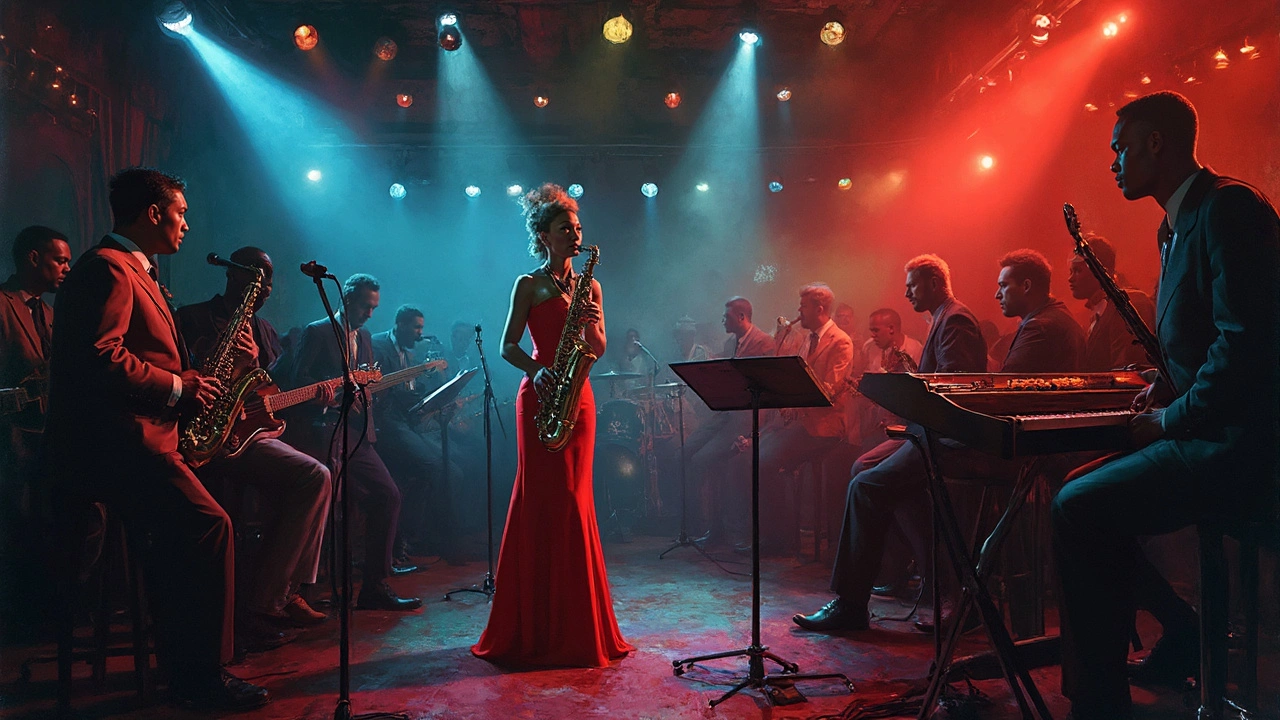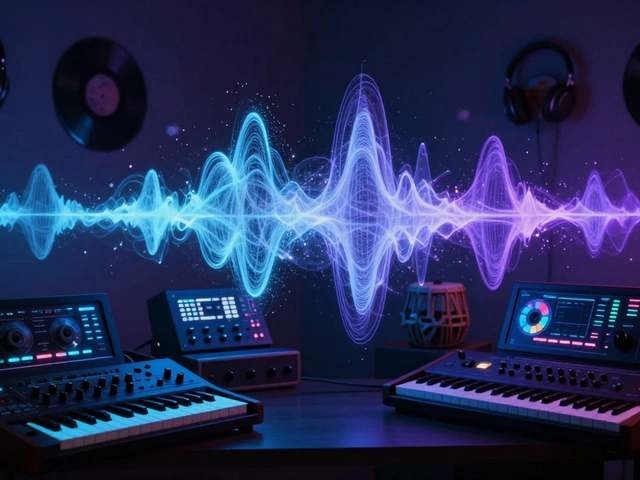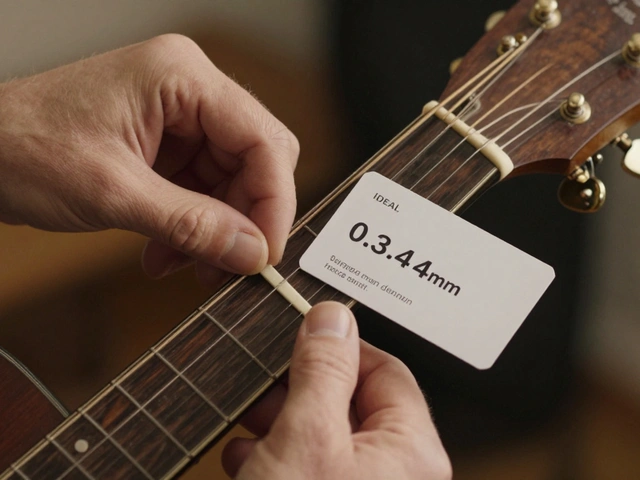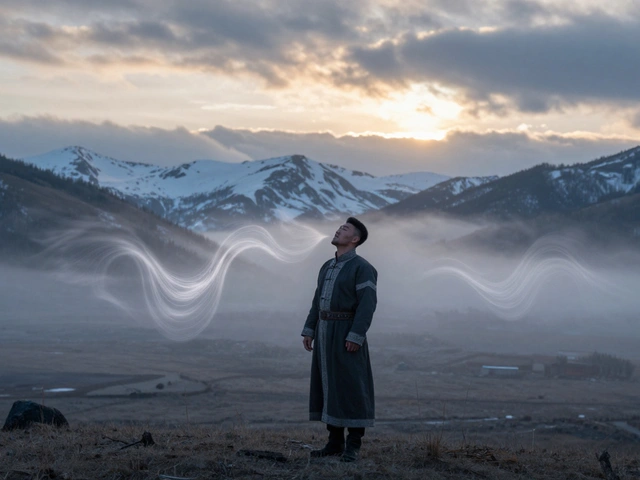Ever wonder why jazz sounds the way it does? Most folks will rattle off names like Miles Davis, Duke Ellington, or Charlie Parker. But here’s something a lot of people miss: some of the coolest, boldest moves in jazz came from women who refused to play second fiddle.
There’s no shortage of stories about women being told to “sit quietly” or stick to singing while the guys took the spotlight. But they didn’t just stick to vocals—plenty of them ran bands, wrote songs, and outplayed the boys on horns, pianos, and drums. You can’t talk about jazz without tipping your hat to players like Mary Lou Williams, who arranged for legends, or Ella Fitzgerald, whose voice could bend a melody into something totally new—like musical origami.
If you’re into discovering real stories of talent and grit, jazz history is packed with women smashing barriers. Their influence isn’t a side note—it’s core to why jazz still feels fresh and rebellious. And yeah, it totally matters who gets heard, even now in 2025, when new voices still have to fight for airtime. Want to get more out of jazz? Start by digging into the women who made it what it is.
- Breaking the Mold: Early Pioneers
- Voices and Virtuosos: Icons Who Changed Everything
- Facing the Music: Barriers and Breakthroughs
- How to Support Women in Jazz Today
Breaking the Mold: Early Pioneers
Back in the day, jazz clubs were filled with cigarette smoke and, honestly, a lot of men hogging the stage. Still, some tough women crashed through those doors and changed jazz for good. Their stories aren’t just cool—they show how fearless and determined you had to be to get noticed if you weren’t a guy.
Let’s start with Lil Hardin Armstrong. She played piano, composed, and even led bands. She wasn’t just Louis Armstrong’s wife—she pushed him to leave King Oliver’s band and stand out solo, completely changing jazz history. Then there's Mary Lou Williams, the brain behind some of the best swing tunes you’ll ever hear. She arranged for household names like Duke Ellington and Benny Goodman, and by the 1940s, she was running her own groups, writing complex music nobody else was even trying.
Blanche Calloway (yep, Cab Calloway's older sister) led her own big band in the 1930s—a first for women at the time. She was known for her show-stopping performances and business smarts, proving women could call the shots in front of the microphone and behind the scenes. Billie Holiday, often called "Lady Day," came strong into the scene by the mid-1930s with a totally different way of phrasing songs, turning simple lyrics into something way more personal and real.
Their impact went way beyond just playing instruments or singing. They opened up jam sessions, shaped how bands sounded, and built networks for other women to come up, too. Check out this handy table for a quick look at their early milestones:
| Name | Main Role | Notable Firsts | Era |
|---|---|---|---|
| Lil Hardin Armstrong | Piano, Composer | First major female bandleader in jazz; urged Louis Armstrong’s solo career | 1920s-1930s |
| Mary Lou Williams | Piano, Arranger | Arranged for Ellington and Goodman; led own groups | 1930s-1940s |
| Blanche Calloway | Band Leader, Singer | First woman to lead all-male big band | 1930s |
| Billie Holiday | Vocalist | Revolutionized jazz vocal phrasing | 1930s-1940s |
These women did more than show up; they forced everyone to pay attention, rewrote the rules, and made women in jazz not just a curiosity, but an essential part of the music. If you're getting into jazz, their recordings are a must-listen. Start with Mary Lou Williams’ “Zodiac Suite" or Billie Holiday’s “Strange Fruit”—you’ll see what the fuss is about immediately.
Voices and Virtuosos: Icons Who Changed Everything
When you start pulling apart jazz history, you find legendary women right at the center of it all. Ella Fitzgerald wasn’t just a singer—she took scat singing and ran with it. She punched through technical boundaries, flipping her voice to sound like a trumpet one second and a drum the next. Reportedly, when she won Amateur Night at the Apollo in 1934, the only reason she even sang was because she got cold feet about dancing. Talk about life-changing moments.
Then there’s Mary Lou Williams, who pretty much wrote the soundtrack for whole jazz eras. She played with Duke Ellington, mentored younger artists like Thelonious Monk, and arranged songs that bands are still cribbing from today. Thelonious Monk called her "the greatest"—and the proof’s in her work. In the 1940s, Williams hosted the first-ever jazz radio show led by a woman, showing just how much guts she brought to the table.
Saxophonist Vi Redd and trombonist Melba Liston also bucked trends. Vi Redd’s 1963 album, "Bird Call," flipped people’s expectations about who should be blowing the sax. Melba Liston, often the only woman in the room, tackled traveling and racism to become one of the top arrangers for Dizzy Gillespie and Quincy Jones.
"Women played with more feeling... A lot of men tried to play like machines. Women had soul." – Mary Lou Williams, quoted in DownBeat Magazine, 1977
Even behind the scenes, women left big imprints. Pianist/composer Toshiko Akiyoshi, from Japan, started her own big band in the US, breaking ground as an Asian woman leader in a mostly male, mostly American club.
If you like seeing the numbers, check this out: by the 1960s, less than 5% of professional jazz musicians in the US were women. That stat comes from the American Federation of Musicians archive records. Yet, every decade, more women kept showing up, making waves, and changing the sound.
| Name | Main Instrument | Major Achievement | Era |
|---|---|---|---|
| Ella Fitzgerald | Vocals | 13 Grammy Awards | 1930s-1990s |
| Mary Lou Williams | Piano, Arranger | Arranged for Duke Ellington, Benny Goodman | 1920s-1980s |
| Melba Liston | Trombone | Arranged for Dizzy Gillespie | 1940s-1990s |
| Vi Redd | Saxophone | "Bird Call" Album | 1960s |
| Toshiko Akiyoshi | Piano, Bandleader | Founded her own big band | 1970s-Present |
The key thing? The women in jazz who broke through didn’t just fit in—they shook things up, making space for whole new sounds and a lot more variety. Their grit, ideas, and guts changed not just jazz, but what listeners expect from any kind of music.
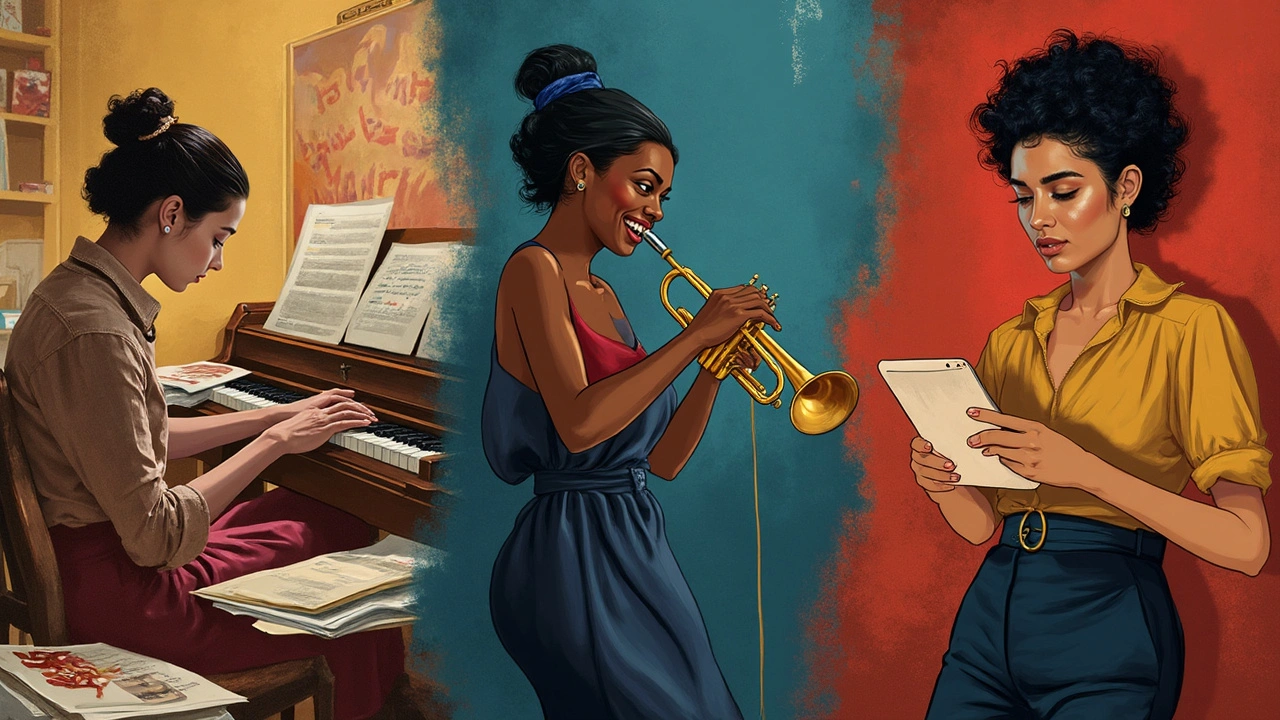
Facing the Music: Barriers and Breakthroughs
The road for women in jazz has never been smooth. For decades, female musicians ran into closed doors at clubs, faced discrimination from record labels, and dealt with bias from other musicians. For example, Mary Lou Williams couldn’t even get into jam sessions in the 1940s unless she agreed to play piano for “the boys.” And she wasn’t alone—many female jazz artists were shoved into the background or discouraged from taking on lead roles unless they stuck to singing.
Racism was also a big deal, especially for Black women in jazz like Billie Holiday and Nina Simone. Both had to deal with not just sexism, but also the segregated venues, unfair pay, and constant touring hassles. The pressure didn’t stop these women, though. Billie Holiday’s song “Strange Fruit,” for instance, became an anthem of resistance. It took guts to perform it back then—it was banned on radio and she got threats, but she sang it anyway.
Getting formal music education was another headache. Until the 1960s, women couldn’t easily get into top music schools or join professional bands. In 1960, less than 10% of jazz band members at the well-known Berklee College of Music were women. It’s better now, but as recently as 2018, women made up only 20% of jazz festival lineups worldwide.
| Year | % Women in Jazz Festival Lineups (Global Avg.) |
|---|---|
| 1960 | Under 5% |
| 1990 | 10% |
| 2018 | 20% |
So how did women break through? Grit, non-stop talent, and some key supporters in the industry. Pianists like Toshiko Akiyoshi started writing big band charts because nobody else was giving her a shot. Composer and trumpeter Terri Lyne Carrington clinched three Grammys and then launched the Berklee Institute of Jazz and Gender Justice to push real change.
- Find and support albums led by women—buy their music instead of just streaming if you can.
- Share playlists that feature female artists so they get noticed.
- Attend shows and festivals that highlight women in jazz.
- Push local radio and venues to play and book more female-led acts.
The scene isn’t perfect, but the conversation has shifted. More festivals now feature equal billing, colleges are ramping up scholarships for female jazz musicians, and online communities are making it hard to ignore the talent. When you show up and speak up, you help chip away at those old barriers, one gig at a time.
How to Support Women in Jazz Today
Supporting women in jazz isn’t just about listening to Billie Holiday or admiring legends from the past. It's about real action—right now. The music scene still has that old boys' club vibe, but things are changing, and there’s plenty you can do to help turn up the volume for female jazz musicians in 2025.
The most direct way? Go to their shows. Ticket sales matter, especially for up-and-coming players. Check out programs from places like the International Women in Jazz festival in New York, or local gigs headlined by women. A live crowd means everything to these artists.
- Follow female jazz artists and bands you like on social media. Platforms like Instagram, TikTok, and YouTube have become real launchpads for getting noticed. Engagement helps boost their visibility, especially for independent artists.
- Stream their music—legally. Use Spotify, Apple Music, or Bandcamp, and consider buying their songs or albums if you can. Streaming not only puts a few cents in their pockets but also ups their chance of getting noticed by algorithms or labels.
- Share their work. Send playlists to friends, tag artists in your posts, and shout them out. Reach matters, and word-of-mouth can take an underrated musician to a whole new crowd.
- Support education programs. Groups like Girls in Jazz and She Is The Music help teach, mentor, and uplift girls who want to play, compose, or run their own bands. Donations or volunteering make a direct impact.
- Push for change at festivals and venues by asking organizers to book more women (especially as instrumentalists, not just vocalists). Many big jazz events are still male-heavy, so more voices demanding balance really add up.
If you want to see where things stand, look at this recent breakdown of top jazz festival lineups:
| Festival | Year | % Female Acts |
|---|---|---|
| Montreux Jazz Festival | 2024 | 23% |
| Newport Jazz Festival | 2024 | 28% |
| North Sea Jazz Festival | 2024 | 16% |
Change might feel slow, but it’s happening, thanks to listeners who care and act. The jazz scene is way better with everyone included. When you champion female jazz musicians, you’re not just making a statement—you’re helping the whole genre stay alive, bold, and fresh. And if you really want to make your mark? Head to a local gig this week and bring a friend. That kind of real support matters more than you think. If you’re after the best new sounds, just type women in jazz in your favorite streaming app. You’ll be surprised by what you find.

